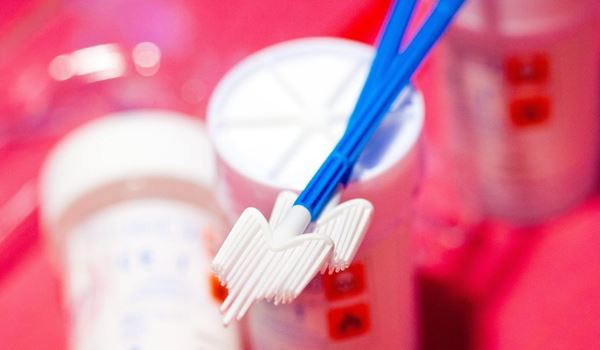Cervical Screening
What is cervical screening?
- Cervical screening (a smear test) checks the health of your cervix. The cervix is the opening to your womb from your vagina.
- It's not a test for cancer, it's a test to help prevent cancer.
- All women and people with a cervix aged 25 to 64 should be invited by letter.
- During the screening appointment, a small sample of cells will be taken from your cervix.
- The sample is checked for certain types of human papillomavirus (HPV) that can cause changes to the cells of your cervix. These are called "high risk" types of HPV.
- If these types of HPV are not found, you do not need any further tests.
- If these types of HPV are found, the sample is then checked for any changes in the cells of your cervix. These can then be treated before they get a chance to turn into cervical cancer.
- You'll get your results by letter, usually in about 2 weeks. It will explain what happens next.
Booking your Cervical Screening?
When you'll be invited:
All women and people with a cervix between the ages of 25 and 64 should go for regular cervical screening. You'll get a letter in the post inviting you to make an appointment.
| Age | When you're invited |
|---|---|
| under 25 | up to 6 months before you turn 25 |
| 25 to 49 | every 3 years |
| 50 to 64 | every 5 years |
| 65 or older |
only if 1 of your last 3 tests was abnormal |
You can book an appointment as soon as you get a letter.
If you missed your last cervical screening, you do not need to wait for a letter to book an appointment.

Your Results:
Your cervical screening results are usually sent to you in a letter. Sometimes you may be asked to call your GP to get the results.
When your results should arrive
The nurse or doctor who does your cervical screening will tell you when you can expect your results letter.
If you have waited longer than you expected, call your GP surgery to see if they have any updates.
Try not to worry if it is taking a long time to get your results letter.
It does not mean anything is wrong, and most people will have a normal result.
Human papillomavirus (HPV) is not found in your sample
Most people will not have HPV (an HPV negative result).
This means your risk of getting cervical cancer is very low. You do not need any further tests to check for abnormal cervical cells, even if you have had these in the past.
You'll be invited for screening again in 3 or 5 years.
HPV is found in your sample
Your results letter will explain what will happen next if HPV is found in your sample (an HPV positive result).
You may need:
- another cervical screening test in 1 year
- a different test to look at your cervix (a colposcopy)
There are 2 different kinds of HPV positive result:
| Result | What it means |
|---|---|
| HPV found (HPV positive) but no abnormal cells | You'll be invited for screening in 1 year and again in 2 years if you still have HPV. If you still have HPV after 3 years, you may need to have a colposcopy. |
| HPV found (HPV positive) and abnormal cells | You'll be asked to have a colposcopy. |
HPV is a common virus and most people will get it at some point. You can get it through any kind of sexual contact.
Important
Having a positive HPV result does not mean your partner has had sex with someone else while you have been together.
You might have HPV even if you have not been sexually active or not had a new partner for many years.
If you need a colposcopy
A colposcopy is a simple procedure to look at your cervix.
It's similar to having cervical screening, but it's done in hospital.
You might need a colposcopy if your results show changes to the cells of your cervix.
Find out more about having a colposcopy
Try not to worry if you have been referred for a colposcopy.
Any changes to your cells will not get worse while you're waiting for your appointment.
Cervical screening during the Covid-19 pandemic
This video will show you what happens at each step of your cervical screening test and some of the extra safety measures that have put in place to reduce the risk of spreading coronavirus.